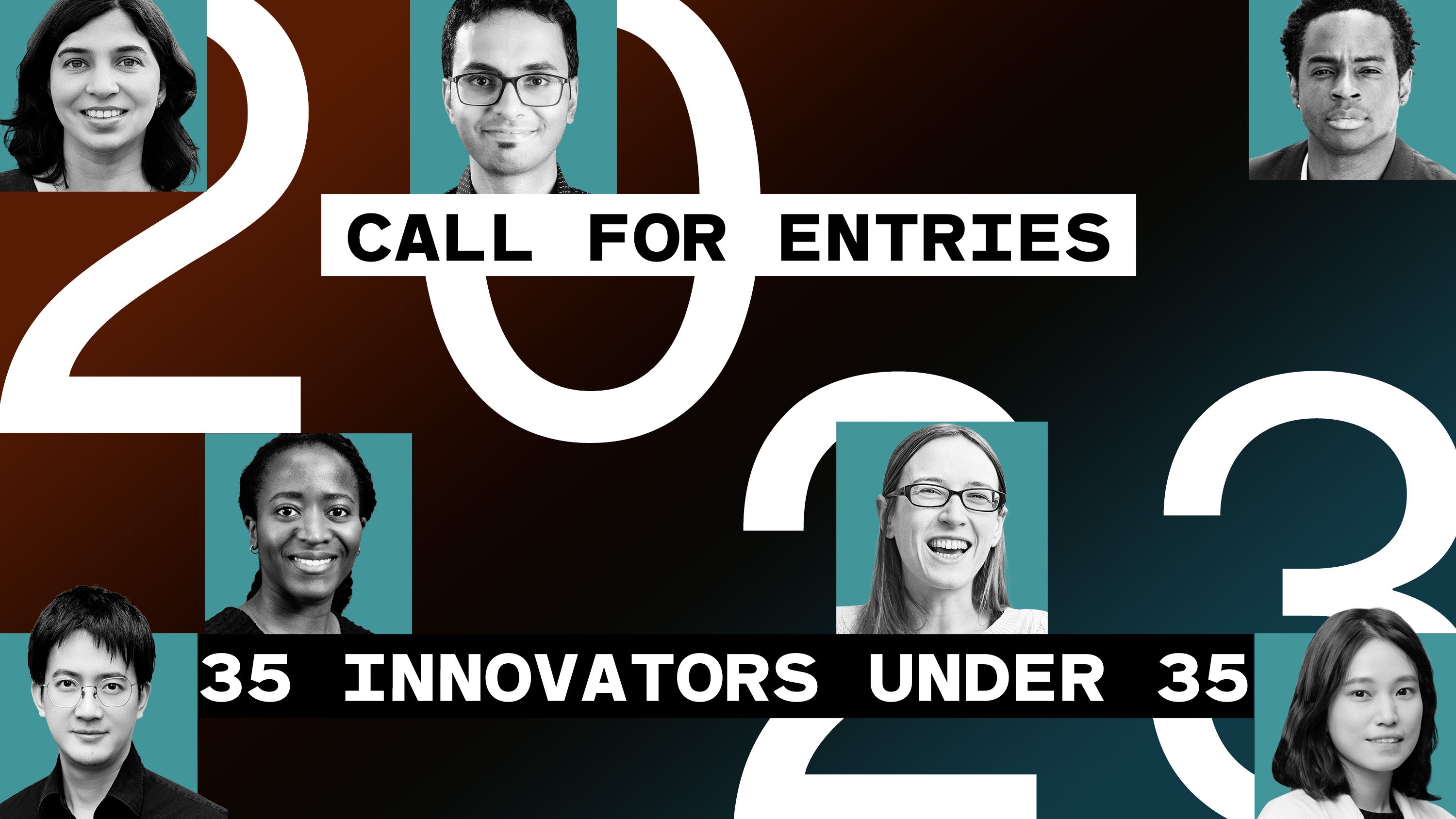The 2023 Innovators Under 35 competition is now open for nominations
Here’s what makes a great candidate—and how you can help us choose the finalists.

You might ask why MIT Technology Review creates a list of 35 Innovators Under 35 every year.
Part of it, of course, is to recognize the good and important work done by people just starting out in their careers—and you can be a part of that process by nominating great candidates right here, starting today and continuing through January 25, 2023.
But there’s a lot more to it than that. By writing stories about these innovative and ambitious young people, we hope to offer you a sense of the amazing possibilities of technology. At the same time, we want to help you understand the threats that exist in our world—whether they’re related to your health, online security, climate change, or something else—and what these up-and-coming innovators are doing about these problems.
More than that, we hope that with the list, we can give you a sense of the future direction of technology so you’re well-informed about and prepared for the coming changes. To see what we mean, take a look at our 2022 winners.
You’ve probably heard of many of the people we’ve selected over the years—Andrew Ng, Helen Greiner, Feng Zhang, Tracy Chou, Ian Goodfellow, Rediet Abebe, Julie Shah, Joy Buolamwini, and Natalya Bailey, to name a few.
We look for people doing interesting work in all areas of technology—biotechnology, artificial intelligence, robotics, computing, energy, electronics, software, nanomaterials, and the internet. Some of our winners have invented a particular technology, while others are entrepreneurs employing technology in a new or interesting way. Others are working to use technology to right a social injustice or make life easier for people in difficult circumstances.
We like to be able to answer questions like: What’s the innovation here? What did this person achieve that hasn’t been done before in quite this way? How is this person working toward solving a major technology problem that could make a huge difference in people’s lives?
Many of our candidates come from research universities or corporations, but we also love to feature inventors, startup founders, and social activists using technology in creative ways to make a difference in their communities.
If this description makes you think of someone, then don’t wait: nominate them now.
And if you’d like to know more about the overall process, please visit our page of frequently asked questions.
Keep Reading
Most Popular
Large language models can do jaw-dropping things. But nobody knows exactly why.
And that's a problem. Figuring it out is one of the biggest scientific puzzles of our time and a crucial step towards controlling more powerful future models.
How scientists traced a mysterious covid case back to six toilets
When wastewater surveillance turns into a hunt for a single infected individual, the ethics get tricky.
The problem with plug-in hybrids? Their drivers.
Plug-in hybrids are often sold as a transition to EVs, but new data from Europe shows we’re still underestimating the emissions they produce.
Google DeepMind’s new generative model makes Super Mario–like games from scratch
Genie learns how to control games by watching hours and hours of video. It could help train next-gen robots too.
Stay connected
Get the latest updates from
MIT Technology Review
Discover special offers, top stories, upcoming events, and more.